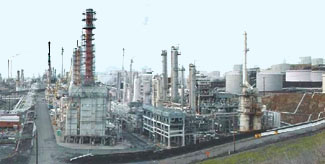Streptococcus mutans
Articles that lack this notice, including many Eduzendium ones, welcome your collaboration! |
Classification
The genus Streptococcus is defined mainly in terms of the morphology of the cells. These bacteria are gram-positive spherical cells that appear mainly in chains due to cell division in the same plane. Incomplete separation of divided cells produces the chain of cells which vary in length. [2]
Higher order taxa
Streptococcus mutans was first described by JK Clark in 1924 after he isolated it from a carious legion, but it wasn’t until the 1960’s that a great deal of interest was generated when researchers began studying dental caries. [2]
Domain; Phylum; Class; Order; family [Others may be used. Use Tree of Life link to find]
Species
The group of oral streptococci closely related to S. mutans is referred to as the “mutans group” or mutans streptococci. The actual taxonomic bacteria Streptococcus mutans is always written in italics while the group name mutans streptococci is not. [3] The mutans group consists of S. rattus, S. mutans, S. cricetus, S. maccacae, S. sobrinus, and S. downeii. [2] S. mutans and S. sobrinus comprise the majority of the group and are only found in humans. [2] They can be distinguished by laboratory tests, but it is not always practical due to costs and time. There is no selective media that would allow the detection and separation of the species and laboratory work is therefore done on the entire mutans streptococci group. Because of its greater prevalence, most of the isolates will in fact be S. mutans. [3]
The two selective media that are widely used for isolating caries-related streptococci are based on Mitis-Salivarius agar and TYC agar to which the antibiotic Bacitracin is added (TYSCB). This suppresses the growth of most species but allows S. mutans and S. sobrinus to grow. The inclusion of sucrose leads to the formation of glucans and a distinctive colony appearance that aids in identification. [3]
Description and significance
Describe the appearance, habitat, etc. of the organism, and why it is important enough to have its genome sequenced. Describe how and where it was isolated. Include a picture or two (with sources) if you can find them.
Genome structure
Describe the size and content of the genome. How many chromosomes? Circular or linear? Other interesting features? What is known about its sequence? Does it have any plasmids? Are they important to the organism's lifestyle?
Cell structure and metabolism
Describe any interesting features and/or cell structures; how it gains energy; what important molecules it produces.
Ecology
Describe any interactions with other organisms (included eukaryotes), contributions to the environment, effect on environment, etc.
Pathology
How does this organism cause disease? Human, animal, plant hosts? Virulence factors, as well as patient symptoms.
Application to Biotechnology
Does this organism produce any useful compounds or enzymes? What are they and how are they used?
Current Research
Enter summaries of the most recent research here--at least three required

